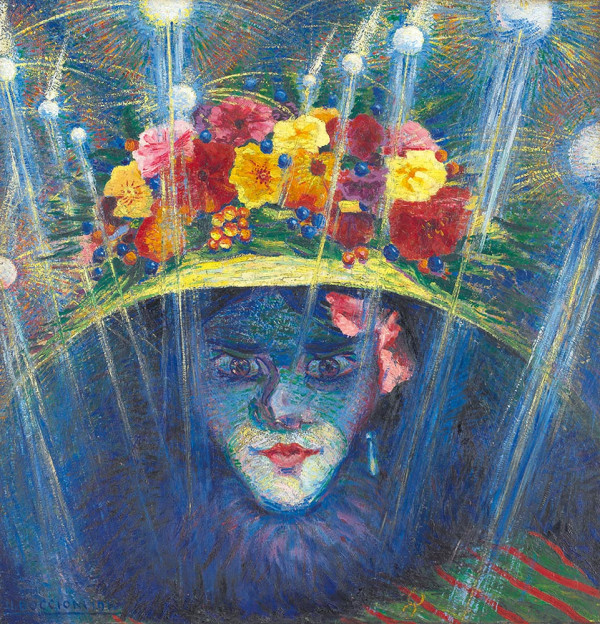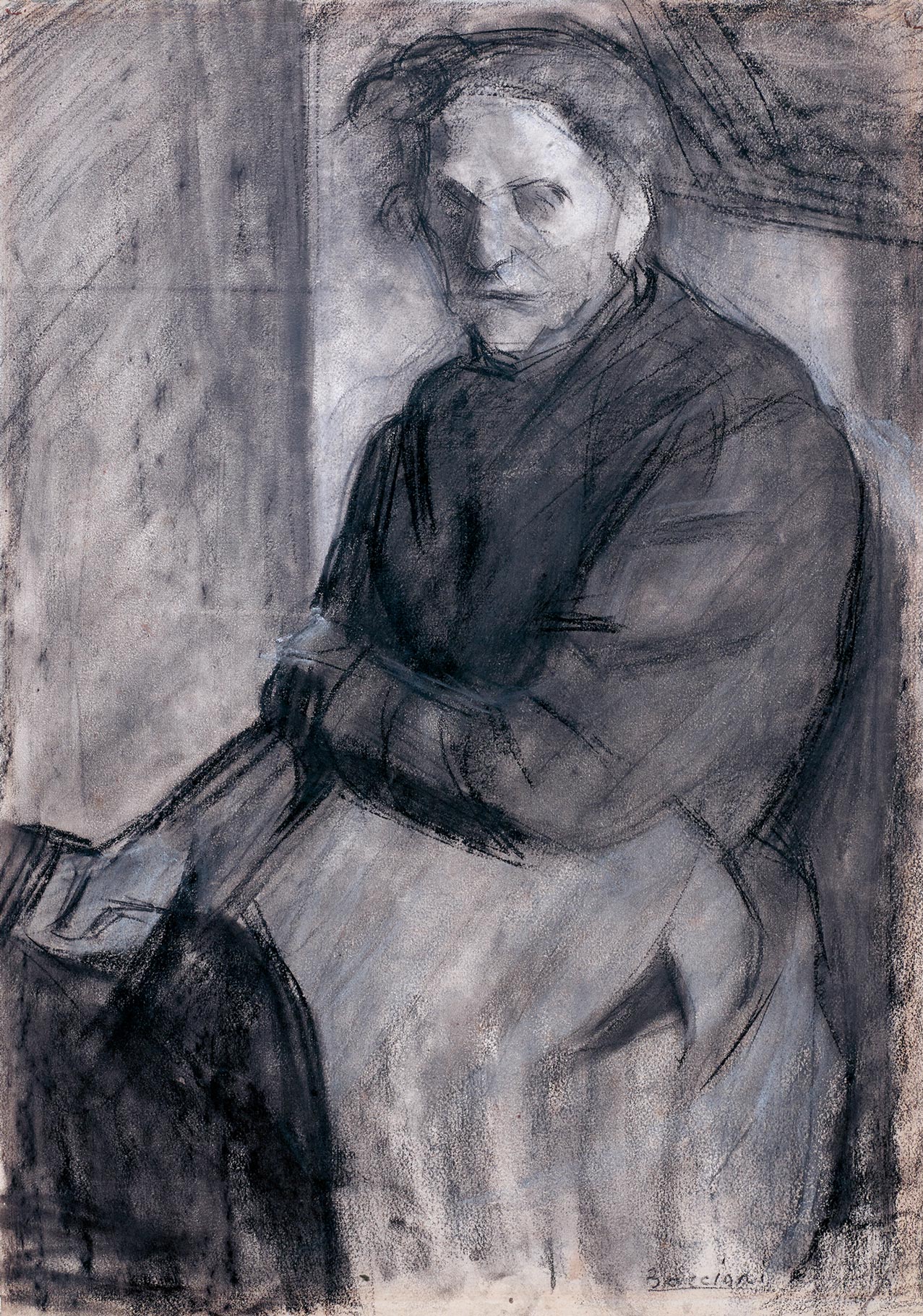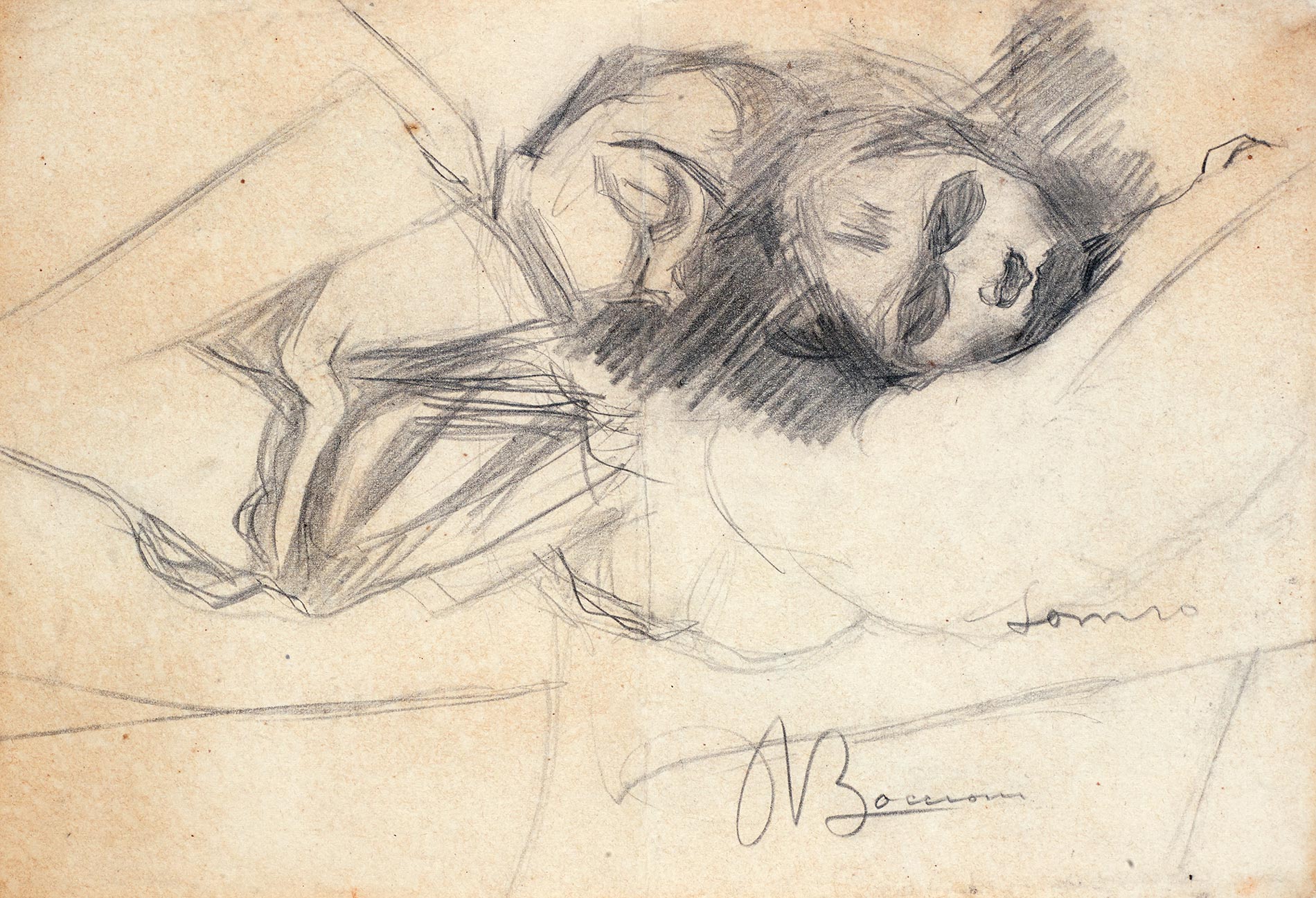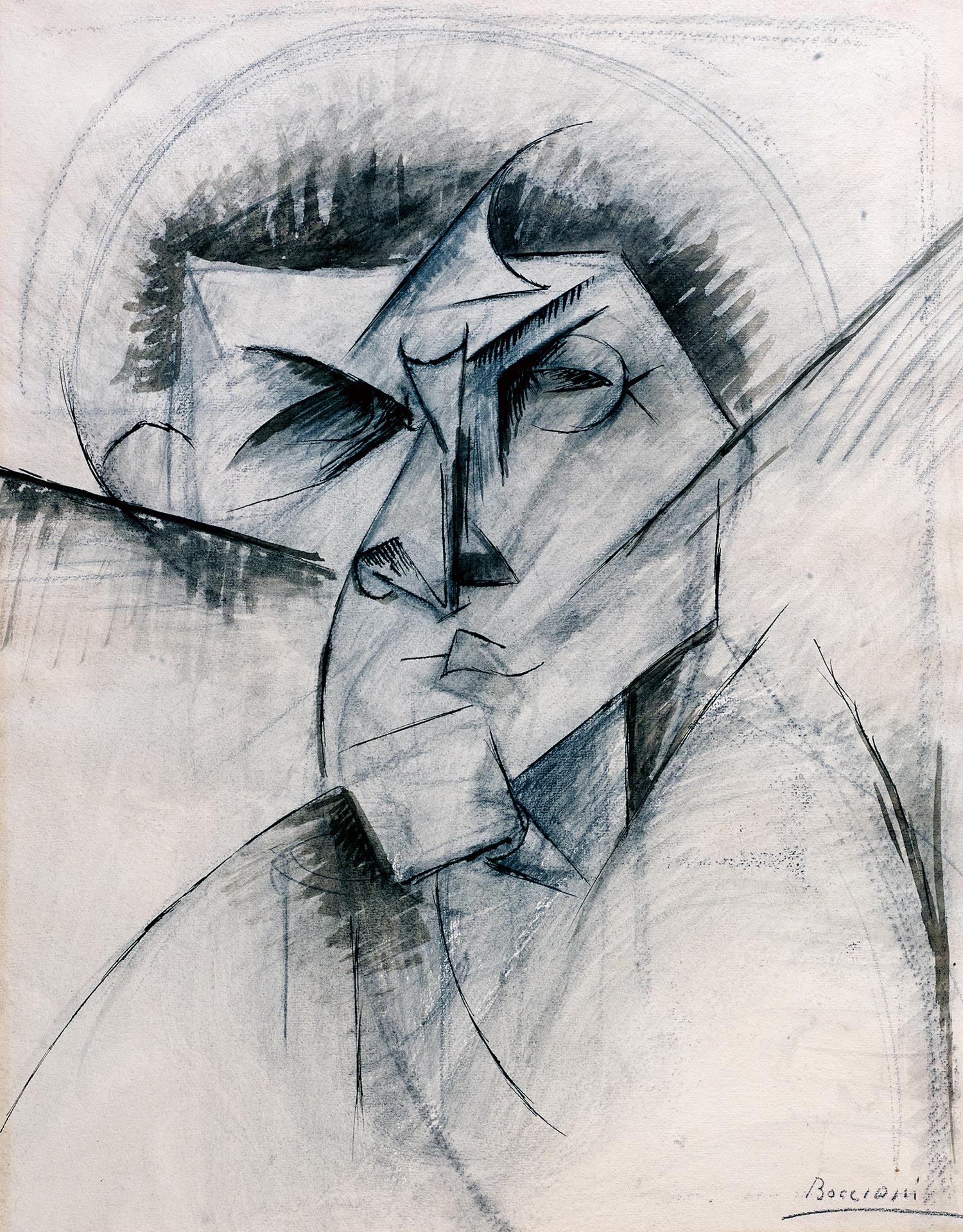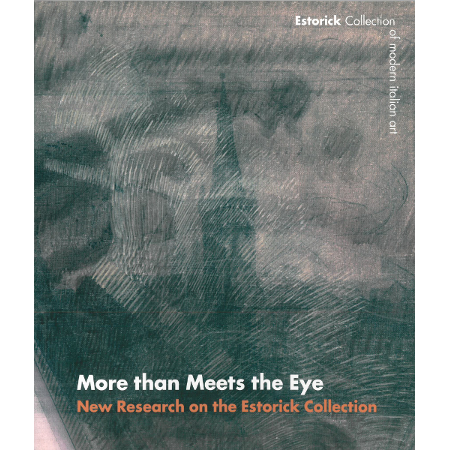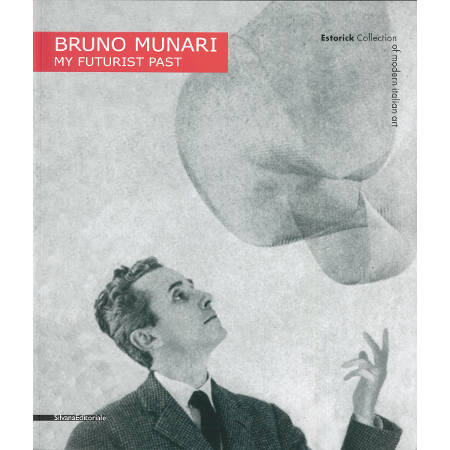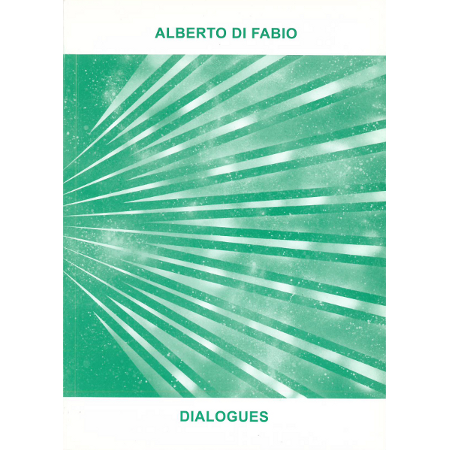Umberto Boccioni
Modern Idol, 1911
Idolo moderno
Oil on panel
60 x 58.5 cm
This iconic, arresting image illustrates a passage from the 1910 ‘Technical Manifesto of Futurist Painting’: “The human face is yellow, red, green, blue, violet. The pallor of a woman gazing in a jeweller’s window is more intensely iridescent than the prismatic fires of the jewels that fascinate her like a lark.” The specific context of this observation may be hinted at here by the earring that emerges out of the shadow cast by the brim of the figure’s hat – and even alluded to by the electric street lights behind her, which resemble huge glowing pearls. This interpretation makes the woman’s penetrating gaze less confrontational than it may initially appear, yet the image remains ambiguous, enigmatic and decidedly unsettling in character. The female presence in Umberto Boccioni’s oeuvre tends to be restricted to family members – most notably, the artist’s mother – or other demure figures engaged in domestic tasks such as sewing or reading. However, around the time of his involvement with Futurism other, more psychologically complex, female protagonists appear in his works. Characters similar to this ‘modern idol’ may be seen fighting in Riot in the Galleria (1910) or enjoying an uproarious evening at a nightclub in The Laugh (1911). An extremely refined portraitist, Boccioni here created an image intended to shock audiences with its harsh, aggressive quality and unsentimental, objective treatment of its subject.
In 2015, it was discovered that Modern Idol was painted on a panel of linden wood, assembled in a similar manner to supports typical of the sixteenth century. Three vertical boards are glued together at their edges and held in place across the rear by two tapered battens of fir-tree wood slipped into dovetail-shaped slots. This type of panel is highly unusual for a painting of 1911, and was certainly not chosen for economic reasons, being far more costly than a canvas and requiring specialised carpentry. One might logically suppose that the artist reused an antique panel, perhaps to reinforce the Futurist agenda (modernity annihilating the antique). However, investigations have not revealed definite traces of any previous image, although scrape marks on a very radio-opaque surface beneath the outer paint layers are clearly evident in X-rays. To clarify the situation, several micro-samples of wood were extracted from the rear of the panel, as well as from the battens, for dating with the Carbon 14 method. Results placed the cutting of the wood from the live tree in an interval somewhere between the second half of the eighteenth and the first decades of the twentieth centuries, thereby confirming the hypothesis that the support is not antique. Ultimately, this panel – and Boccioni’s reasons for using it – remain something of a mystery.
This painting was one of 24 works purchased by a certain Dr Borchardt when the Futurists’ first major international exhibition toured to Berlin in the spring of 1912
Related works in the collection
Related products
More than Meets the Eye
Bruno Munari: My Futurist Past
Alberto di Fabio: Dialogues
